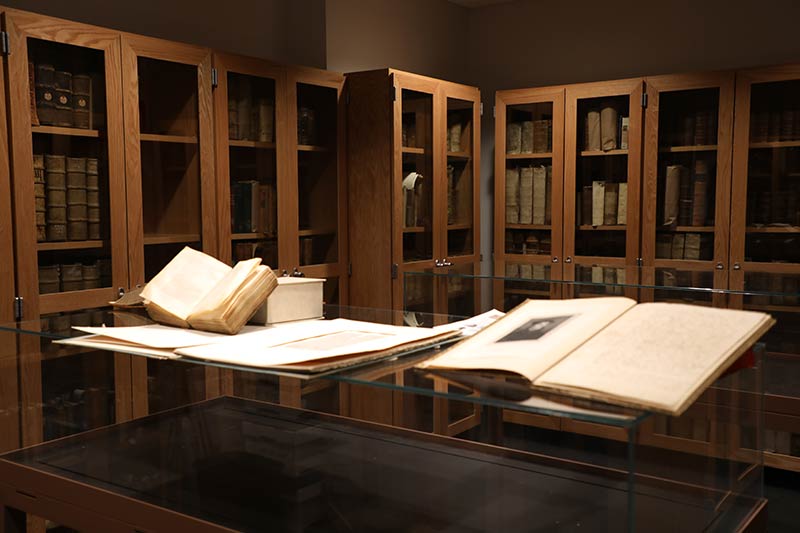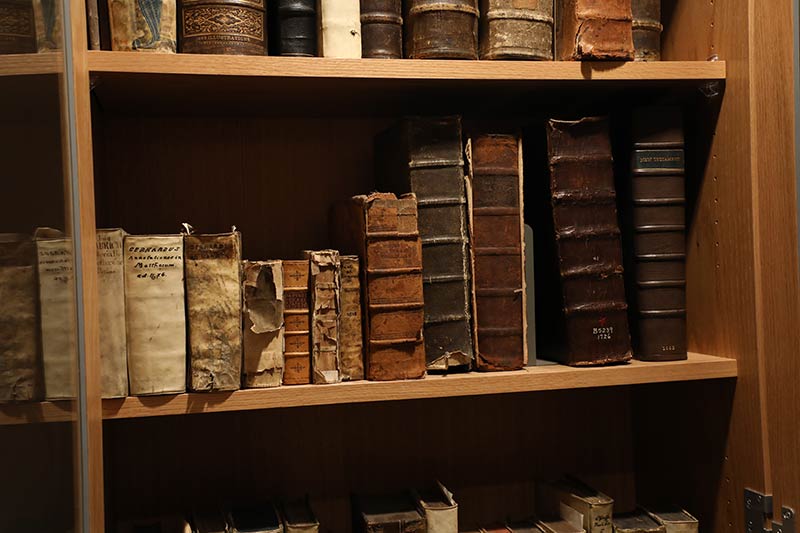Developing the Treasure of the Rare Books Collection
By Alisha Green

Nestled on the fourth-floor home of the Lutheran School of Theology at Chicago, the Rare Books Collection display room holds more than a thousand volumes related to New Testament and Reformation Studies. Still, the room represents only a fourth of the larger Rare Books Collection at LSTC, which includes over 4,500 total items and more than 1,200 years of theology and history inscribed on sheepskin, vellum, and paper.
The collection is a treasure that President emeritus James Nieman wants to ensure is preserved and accessible to all.
“A rare books collection sounds like it’s really ancient, only about yesterday and without any current value,” Nieman said. “So it gets ignored. My concern is that it has been one of the most underutilized resources the school has.”
Nieman decided that he wanted to revitalize the collection prior to his January 2025 retirement.
“We’re in the unusual position to do something to develop a portion of the world that we have as a treasure right now,” he said.
The Rare Books Collection Campaign launched in November 2024 with a goal of raising $250,000 for cataloging the collection, improving its accessibility, ensuring it’s preservation, and adapting it for modern educational needs like asynchronous online learning. An updated and flexible website for the collection, which is currently in development, will allow people around the world to access the materials.


“We have all kinds of documents, and people have no idea that we actually have them right here,” Nieman said.
Nieman acknowledged that managing and organizing the collection can feel overwhelming. The goal is to organize the material in a manner that maximizes its educational benefit. The next step for the collection is comprehensive, searchable cataloguing. The rare books that are not presently in the display room are in climate-controlled storage, and Nieman is eager to make the collection more accessible to LSTC students, faculty, staff, and campus visitors.
“There are many uses for this material that have never been realized,” he said. “We can finally produce and share some amazing educational products and asynchronous materials that people can engage with and enjoy.”
Although a small portion of the collection, mainly related to studies of the New Testament, has been digitized for wider use, there are some details on the page that are best appreciated in person.
“Digitization can’t possibly pick up some of the qualities of the page and of the writing that are actually there when you physically examine a text,” he said. “We’ve had scholars come and see something in person that they could never see by just looking at an artifact on the screen.”
Nieman added that preserving these materials shows respect for the past. “I think about the number of hands through which a particular document went, folks whose hands held this thing, under different conditions, amidst varied situations of life, in the midst of war or peace, during worship either joyous or sorrowful,” he said. “There’s a lot of human story here.”